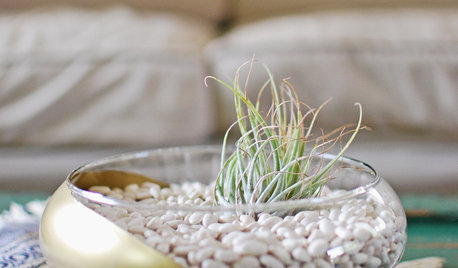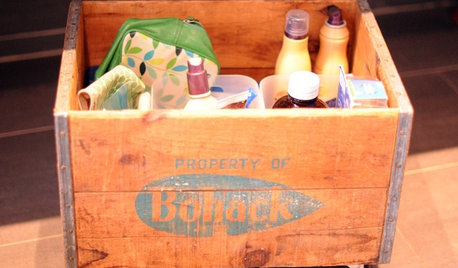For those who use DIY nutrients
hydro_esox
14 years ago
Related Stories

DIY PROJECTSHide All Those Wires in a DIY Charging Station
Keep your gadgets handy and charged with a flexible storage board you can design yourself
Full Story
HOUSEKEEPINGGet Those Carpet Stains Out: Best Nontoxic Methods for Spot Cleaning
Banish blotches the safe way with pantry staples, to get your rugs looking as clean as the day they came home
Full Story
MOST POPULARHow to Get Rid of Those Pesky Summer Fruit Flies
Learn what fruit flies are, how to prevent them and how to get rid of them in your home
Full Story
ORGANIZINGStorage Tricks for Those Who Love Their Stuff
Get ideas for clearing the decks without getting rid of all the lovely things you want to keep around
Full Story
HOUSEKEEPINGBefore You Roast Those Chestnuts, Make Sure You've Got a Clean Chimney
Here's how to ensure your chimney is safe for holiday gatherings by the fire
Full Story
ACCESSORIESHow to Hide Those Messy Wires
Untangle Yourself From Ugly Electrical Cords With a Few Tricks and Accessories
Full Story
DECORATING GUIDESFix Those 'Whoopsies': 9 Fast Solutions for Decorating Mistakes
Don't suffer in silence over a paint, furniture or rug snafu — these affordable workarounds can help
Full Story
REMODELING GUIDESGreat Ways to Dress Up Those Necessary Columns
Many homes need a structural column or two, especially in today's open-plan spaces. Here's how to turn them into superstars
Full Story
CRAFTSBowl Over Guests With a DIY Air Plant Terrarium
Air plants don't need much attention, but they'll get it anyway with a snazzy, gilded home you make yourself
Full Story
ORGANIZINGDIY: See How to Make a Rolling Vintage Storage Crate
Corral those bottles of lotions and creams in wheeled cubbie for under the sink
Full Story






lucas_formulas
hex2006
Related Professionals
Danbury Landscape Architects & Landscape Designers · Tempe Landscape Architects & Landscape Designers · Oatfield Landscape Architects & Landscape Designers · Bell Gardens Landscape Contractors · Brockton Landscape Contractors · Danvers Landscape Contractors · Lewisville Landscape Contractors · Mission Viejo Landscape Contractors · North Haven Landscape Contractors · Oak Forest Landscape Contractors · Santa Maria Landscape Contractors · Webster Groves Landscape Contractors · Wickliffe Landscape Contractors · Wilton Landscape Contractors · Ferguson Landscape Contractorslucas_formulas
hex2006
lucas_formulas
hex2006
hydro_esoxOriginal Author
grizzman
hydro_esoxOriginal Author
hex2006
hydro_esoxOriginal Author
hex2006
lucas_formulas
hydro_esoxOriginal Author
hydro_esoxOriginal Author
lucas_formulas
hex2006
lucas_formulas
grizzman
lucas_formulas
hex2006
lucas_formulas
hydro_esoxOriginal Author
lucas_formulas
lucas_formulas
hydro_esoxOriginal Author
hydro_esoxOriginal Author
lucas_formulas
wordwiz